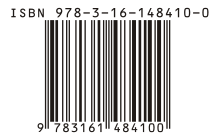Human readability

As a human-readable refers to an information representation without aid of people read can be. In most contexts, the alternative representation is a representation of data that was designed primarily to be read by computers, i.e. to be machine-readable . The sequence of digits that commonly accompanies a UPC bar code is, for example, a human-readable form of the information contained in the bar code.
In the case of bar codes that are used in shops, laws often require that, in addition to the machine-readable bar code and the price at the cash register , a human-readable price is / is also attached to the goods .
In the field of computing , human readable refers to data displayed in a format that most people can easily read. Usually this is ASCII encoded text as opposed to binary data . It should be noted that any data format can be read ( parsed ) by a suitably programmed computer .
Reasons for binary formats the text preferred formats have mostly to do with the memory requirements (a binary representation usually takes less space) or the fact that the data easier (error faster, un can be read into a computer program more vulnerable).
That being said, with the advent of well-specified, structured markup languages like XML and the falling cost of data storage, compromises between human readability and machine readability are now more feasible than they used to be.
In connection with human-readable data is often of plain text ( plain text ) or plain text formats spoken.